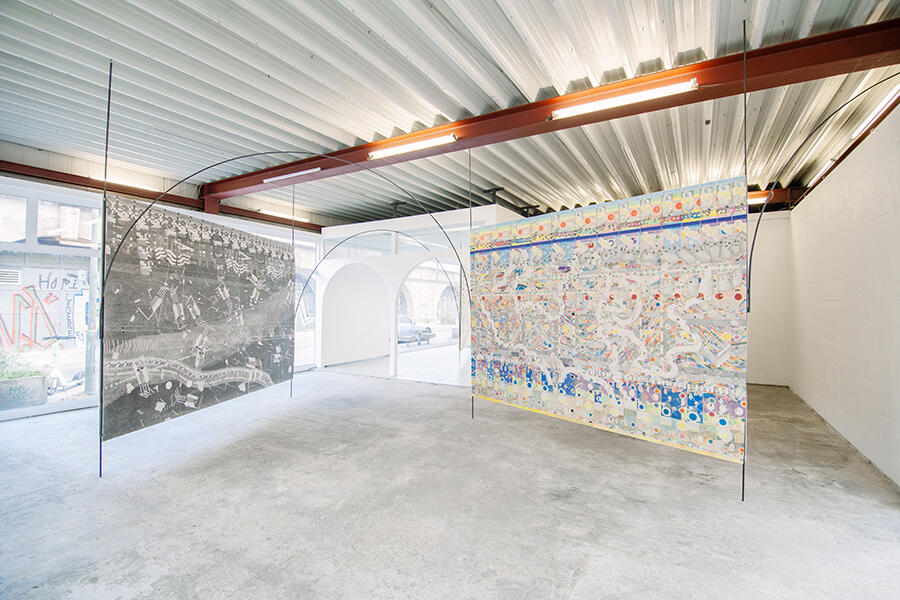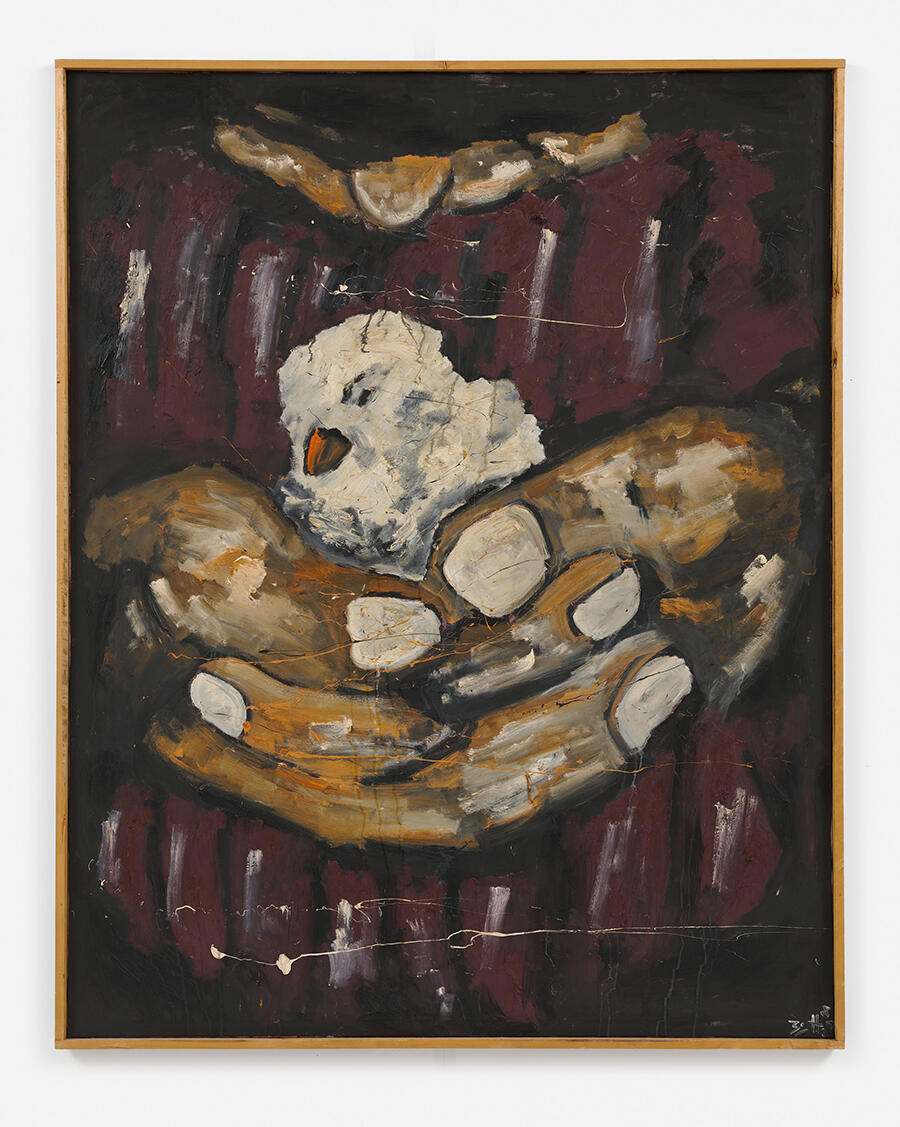A Critic’s Guide to Berlin Art Week
Mitch Speed picks the best gallery shows to see in the German capital
Mitch Speed picks the best gallery shows to see in the German capital

Walter Price
Barbara Wien
10 September 2022 – 21 January 2023

For viewers who love to channel hop, Price’s show could provide a sense of kinship. Intermixing small, intense paintings and sculptures, the exhibition shows that colour can give magnetic form to chaos. A group of drawings made with acrylic paint and stickers encompasses, amongst other things, ominous-looking men, throwback female nudes and Rorschachy blotches. Each is set behind ruby-coloured glass, lending uniformity to Price’s plural themes. A group of small paintings on wood has been turned into a sculpture called Talking in Circles (all works 2022), with hinges binding the panels into a ring formation set on the floor. Price’s titles range from stoner banality – Dude Watching a Book – to existential gravitas – The Weight of Thought. Consisting of a few books fastened to a suitcase, the latter work directly but charmingly summarizes the show’s underlying psychodynamic.
Megan Plunkett
Sweetwater
9 September – 29 October

Megan Plunkett homes in on the sweet spot between irreverence and earnestness. Her current show at Sweetwater, ‘Leave It’, combines an almost meditative return to past motifs with a cheeky taste for formal and semiotic association. A can of Coca-Cola reappears in a row of small, spartan photographs, all titled Signs and Wonders with a corresponding number. Other works in this series display an inscrutable object, barely perceptible as a shiny shard in darkness. Each photo’s matting is specific, with horizontally cropped images sitting inside of portrait-oriented frames – all metal and either black, silver or red. In one photo, two dogs – one real, the other porcelain – stare off-frame. They rhyme with another big image wherein two dogs appear on the cover of a William Wegman book, one of them hidden beneath a small, vaguely animalistic sculpture (Dreamland 1). The spirit animal of Plunkett’s approach could be John Baldessari, whose work is about playing the associative power of images with maximum lightness. In a similar way, Plunkett stretches the viewer’s mind between the sensing of a logical system and pure play.
Isabell Schulte
Spoiler Aktionsraum
3 September – 14 October

In Isabell Schulte’s large pencil drawings – which saw her nominated for this year’s Berlin Art Prize – scrupulously rendered patterns sprawl across great big sheets of paper. Their endless details are refreshingly nerdy. Dispersed in organic and architectonic planes and sectors, they almost suggest maps and circuit boards. But, owing to Schulte’s technique and rigour, the works consistently slip back and forth between these potentially limiting associations, and waves of rhythm, pattern and contour. To look at the works in sequence is to watch energized structures repeating, evolving and deepening. This is drawing as perpetual dispersal – the visual equivalent of techno.
Kiki Smith
Galerie Thomas Schulte
17 September – 22 October

In an appreciative 1990 essay for Artforum, the writer Christopher Lynn flagged a potentially squirm-inducing quality in Kiki Smith’s work. For Lynn, the artist’s sculptures of body parts, which figured in fabulative ‘meditations on birth and rebirth’, were both illustrative and anachronistic, yet irrefutable in their incongruous affirmative and critical force. Smith’s elemental and mythical style seemed to go out of style during the 2000s and 2020s, as art-world trends largely swung into methods rooted in relational aesthetics and post-conceptual sculpture. It’s been a few years now since human and animal figures and fairytale-esque mannerisms became trendy again in painting and sculpture. So, this survey of Smith’s work of the last two decades, including the larger-than-life aluminium female nude Red Standing Moon (2003), is well timed. Whatever your thoughts are on the return of figures and mythic motifs in art, the show can help us understand Smith as a crucial precursor.
Werner Büttner
Galerie Max Hetzler
16 September – 22 October

Created between 1981 and 1986, the dense and choppy paintings in Werner Büttner’s solo exhibition at Galerie Max Hetzler are at home in a contemporary art world that has seen a rise in figuration in recent years. Along with German ‘bad boy’ godheads Martin Kippenberger and Albert Oehlen, Büttner was infamously a member of Neue Wilde, a group that relished in scandalizing civility. In a society that has reduced many of us to numbed mechanisms for generating capital, this exhibition compellingly makes the case that a tender and searching look at the human self might be the wildest thing of all. Selbst bei Ich könnt’ im Bett verfaulen (Self [portrait] as I Could Rot in Bed, 1986) is an overhead view of a man, presumably Büttner, lying in bed. A pop of colour is provided by a rectangle of orange carpet and a black-silhouetted ceiling fan transposed over the subject’s body, while the title laces this image of apparent relaxation with a psychological undertone. Is it guilt, depression or just dark humour?
Main image: Isabell Schulte, 'Part I–IX', 2022, exhibition view, Spoiler Aktionsraum. Courtesy: Isabell Schulte and Spoiler Aktionsraum; Photo: Sandra Gramm























